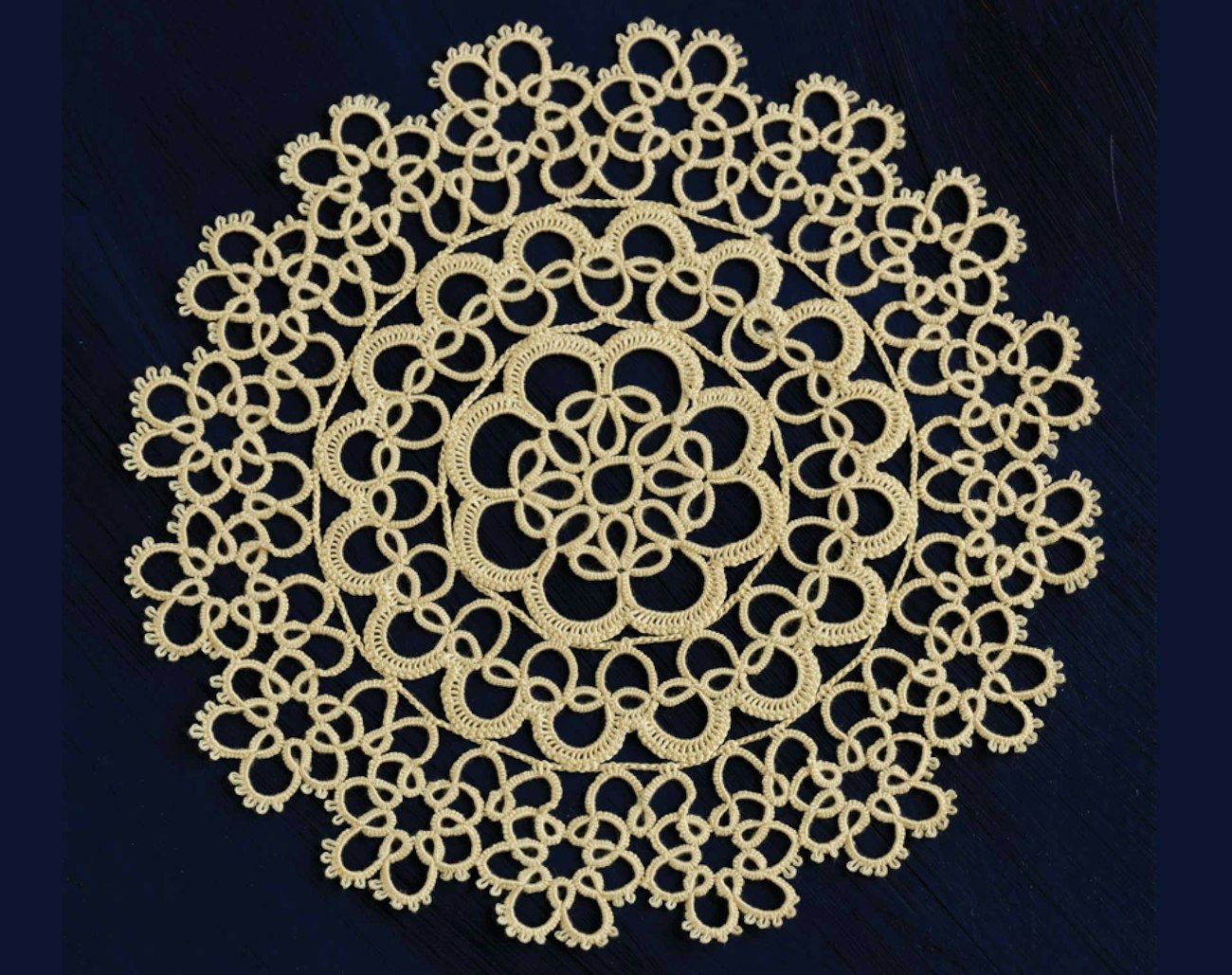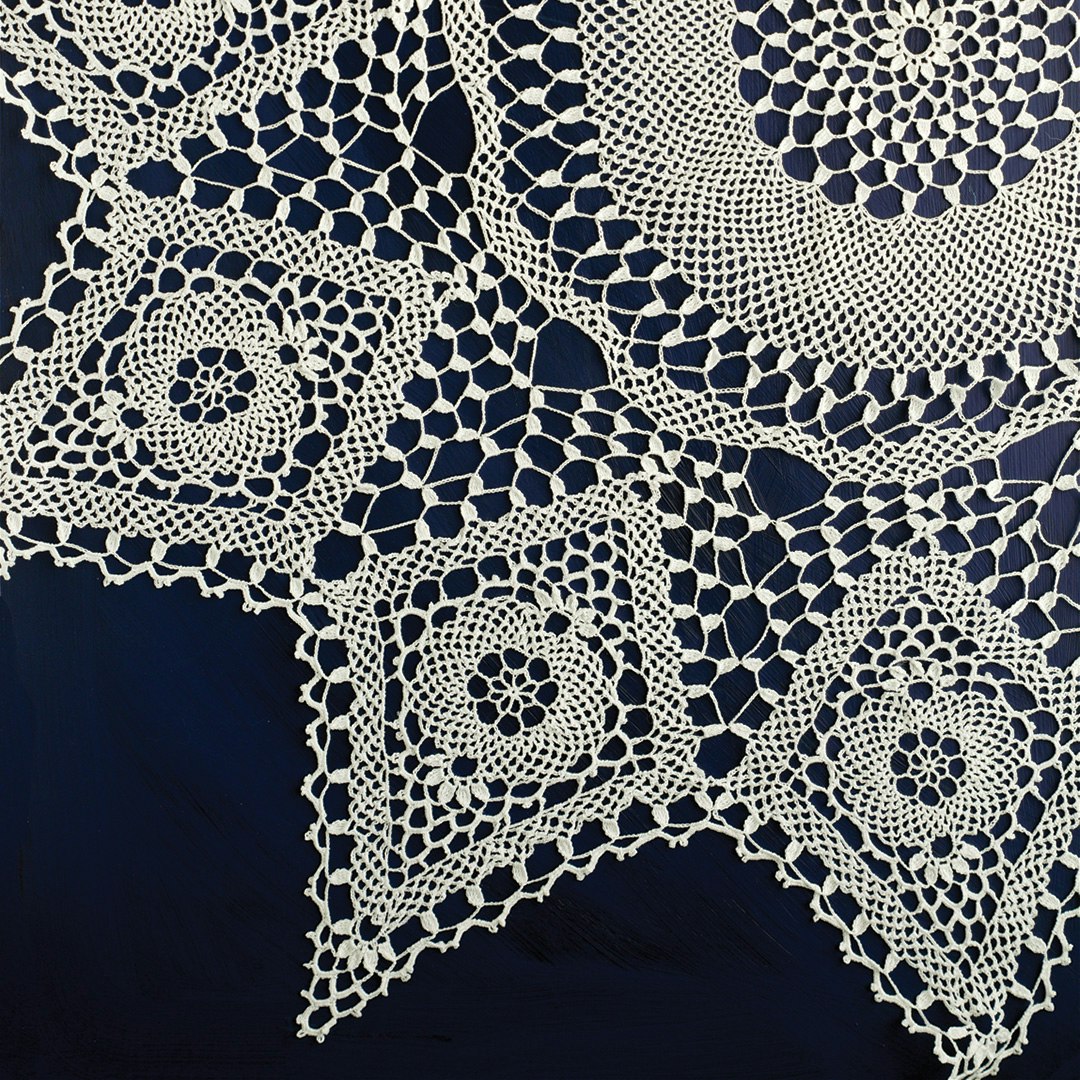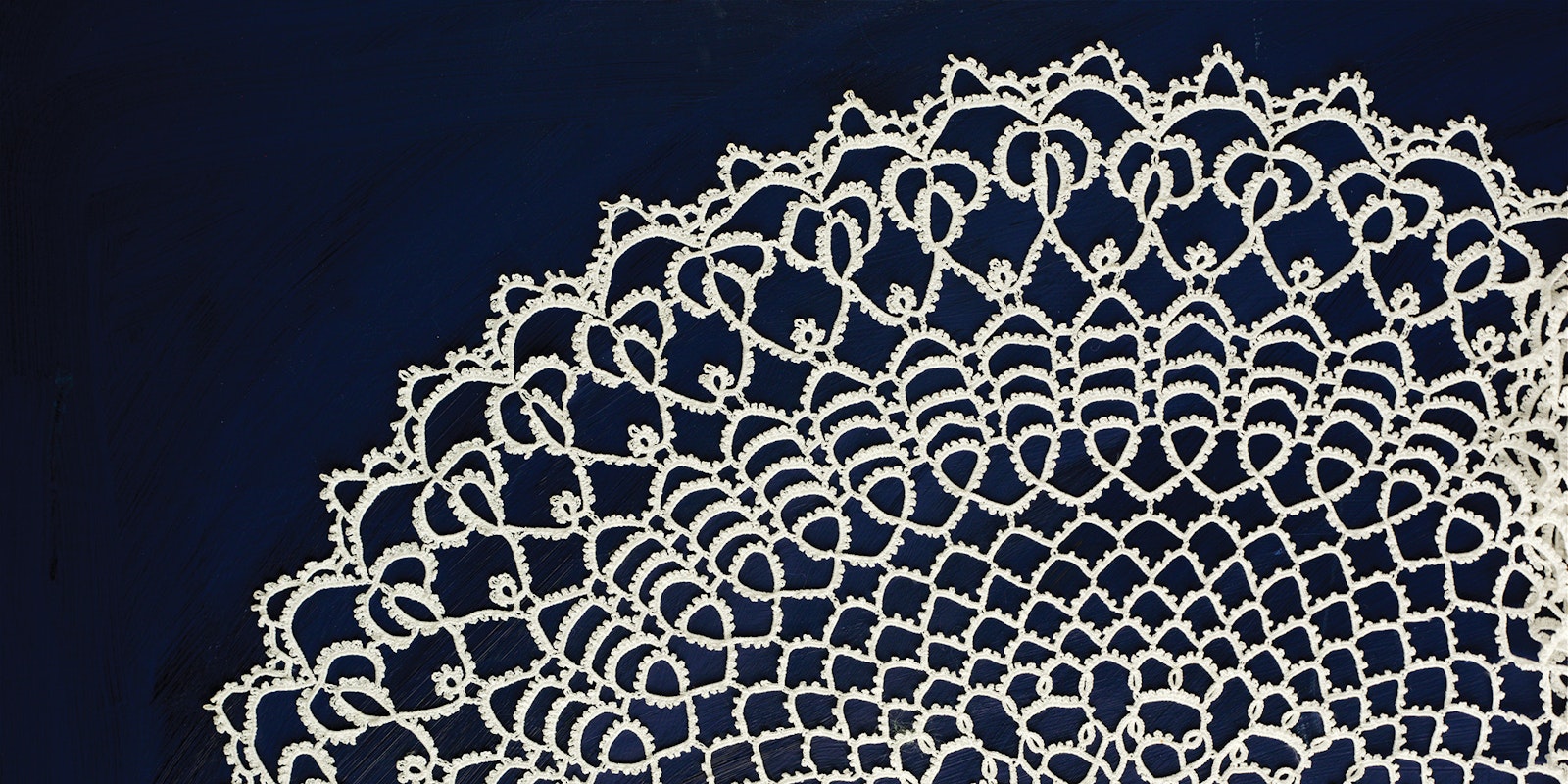Laces are created using diverse techniques. Some techniques are destructive—beginning with fabric and cutting holes in it; others are constructive—starting with yarn and building a fabric with holes. One approach to lacemaking is to construct an airy fabric using a single, continuous strand of yarn (here defined as multiple strands of fiber twisted together, which includes thread).
Because not every lacemaker approached her strand of yarn with the same vision, two methods of manipulating a single yarn into lace evolved: knotting and looping. The difference between knotted and looped lace lies in how the unworked tail of yarn is attached to the lace already completed. In knotted laces, a new loop is formed and knotted into place by passing the entire tail through the loop. In looped laces, only enough tail is drawn through the completed work to form a new loop, and no knot is used. In most laces, the loop/knot combination is referred to as a stitch. Which method is chosen to form a lace dictates which tools are used to make it and affects the speed with which it can be made, its structural stability, and its overall appearance.
Knotted Lace
A single type of knot is generally used for an entire piece of a given lace, but different laces use different knots, and all knots are not created equal. The simplest knot used is a variation of the half hitch, or buttonhole stitch; this is the knot used to create hollie point (see “Clothing for Babes in Arms: Eighteenth- and Nineteenth-Century Childbed Linen” by Jean Daly Randazzo and “A Hollie-Point Medallion to Stitch for Baby” by Mary Polityka Bush, PieceWork November/December 2000). A single half hitch is not very stable, and the size of the loop easily shifts. Placing two half hitches right next to each other forms a locked pair, however, with the adjacent stitches supporting each other. In hollie point, stability is increased by passing the needle through the loop of the single half hitch twice, and close spacing of the small stitches provides support. The resulting lace closely resembles knitted lace, which also is composed of small, closely spaced stitches.
Slightly more complex is a pair of reversed half-hitch knots as seen in tatting (see “Beginning to Tat,” PieceWork May/June 2007). By reversing the direction of one half hitch relative to the other, a very tight knot that won’t work loose is formed. As with hollie point, the knots have to be worked close together, as each relies on its neighbors for support. Note that the open spaces seen in tatting fall between rows of knots, not between individual knots.
The most complex knot in lacemaking is the sheet bend, or weaver’s knot; it is used in both netting and Armenian lace (see “Bebilla and Oya: Needle-Knotted Miniature Laces” by Kax Wilson, PieceWork July/August 1996). The sheet bend is self-locking, making it stable even when standing alone. Laces made with this knot can have loops of any size, and adjacent loops can be of varying sizes because there is no chance of a knot working loose, allowing the loops to change size. Sheet bends allow for the most open, airy laces, as a single strand of yarn can span a great distance between knots.
Although knotted laces have the advantage of being stable, they have the disadvantage of taking a long time to make. The more complex the knot, the more time consuming the lace is to make. A piece of simple knotted lace such as tatting can take three to five times as long to make as an equivalent area of a looped lace such as knitted lace, and a lace made with a complex knot can take ten to fifteen times as long.

Doily. Maker unknown. Outer ring, tatted; inner rings, crocheted. Cotton thread. China. 2000. 7½ inches (19.1 cm) in diameter.
Looped Lace
Looped lace may be fast to make, but it lacks stability, just the reverse of knotted lace. In knitted lace, a knit or purl stitch is made by simply pulling up a small portion of the tail to form a new loop; the tail never passes through the loop, and the new loop has no knot to help it hold its size or shape.
The lack of knots results in a lace in which stress on one loop affects neighboring loops. To keep stresses on adjacent loops about equal, all loops must be about the same size, and they must be placed close together so that adjacent loops provide some meager support to one another. It’s not surprising that knitted lace looks quite solid, with comparatively small holes.
Looped and Knotted Lace
What if you want the speed of making looped lace combined with the stability that knotted lace affords? Try crochet. A single crochet stitch begins with a loop just like the knit stitch, but then a second loop is added that functions as a knot. This loop/knot provides stability similar to that of a simple knot such as a half hitch: it locks in the size and shape of the loop and isolates it from surrounding loops. All crochet stitches end with this single loop that functions as a knot.
Because crochet borrows techniques from both knotted lace and looped lace, it has the uncanny ability to mimic either. It can be worked more solidly with small holes like knitted lace and hollie point, it can emulate the closely spaced knots in tatting, or it can be light and airy like netting and Armenian lace.
 Table cover made by the author. Armenian crocheted (resembles Armenian knotted lace). Cotton thread. America. 2009. From a 1926 pattern reprinted in Old-Time Crochet, Winter 1998. 43
inches (109.2 cm) in diameter.
Table cover made by the author. Armenian crocheted (resembles Armenian knotted lace). Cotton thread. America. 2009. From a 1926 pattern reprinted in Old-Time Crochet, Winter 1998. 43
inches (109.2 cm) in diameter.
Tools
All single-yarn laces require a tool to carry the yarn. Some also require a gauge to keep the size of the loops consistent.
In knotted laces, a needle with an eye or a shuttle carries the yarn tail through a loop. Except in tatting (where the shuttle never goes through a loop), the tool has to be smaller in diameter than that of the finished loops because it has to pass through a finished loop to attach the new loop to the work.
A gauge may be used in conjunction with the shuttle or needle to size the loop before the knot is made. This is most important in knotted laces such as netting, in which large loops can be made, although in Armenian lace, which may have large loops, no gauge is used. In that technique, size is gauged by eye and experience. In tatting and hollie point, choosing yarn of the appropriate size and spacing the knots closely together helps to ensure consistency. Crochet hooks and knitting needles combine the functions of yarn carrier and gauge. The hook or point must fit through previous loops, and the shank determines the size of the loops.

Interested in learning more about lace? This article and others can be found in the May/June 2009 issue of PieceWork.
Also, remember that if you are an active subscriber to PieceWork magazine, you have unlimited access to previous issues, including May/June 2009. See our help center for the step-by-step process on how to access them.
Further Reading
- Ashley, Clifford W. The Ashley Book of Knots. 1944. Reprint, New York: McGraw-Hill, 1990.
- Caulfeild, Sophia Frances Anne, and Blanche C. Saward. The Dictionary of Needlework. 1882. Reprint, New York: Random House, 1988.
- Kasparian, Alice Odian. Armenian Needlelace and Embroidery. Gibsonville, North Carolina: EPM, 1983. Out of print.
- Kurella, Elizabeth M. Guide to Lace and Linens. 1998. Revised ed., Whiting, Indiana: The Lace Merchant, 2006.
Needlearts scholar, teacher, and designer Nancy Nehring frequently writes about the history of needlework; she is the author of The Lacy Knitting of Mary Schiffmann (Interweave, 1998).
Originally published January 4, 2021; updated November 13, 2023.

